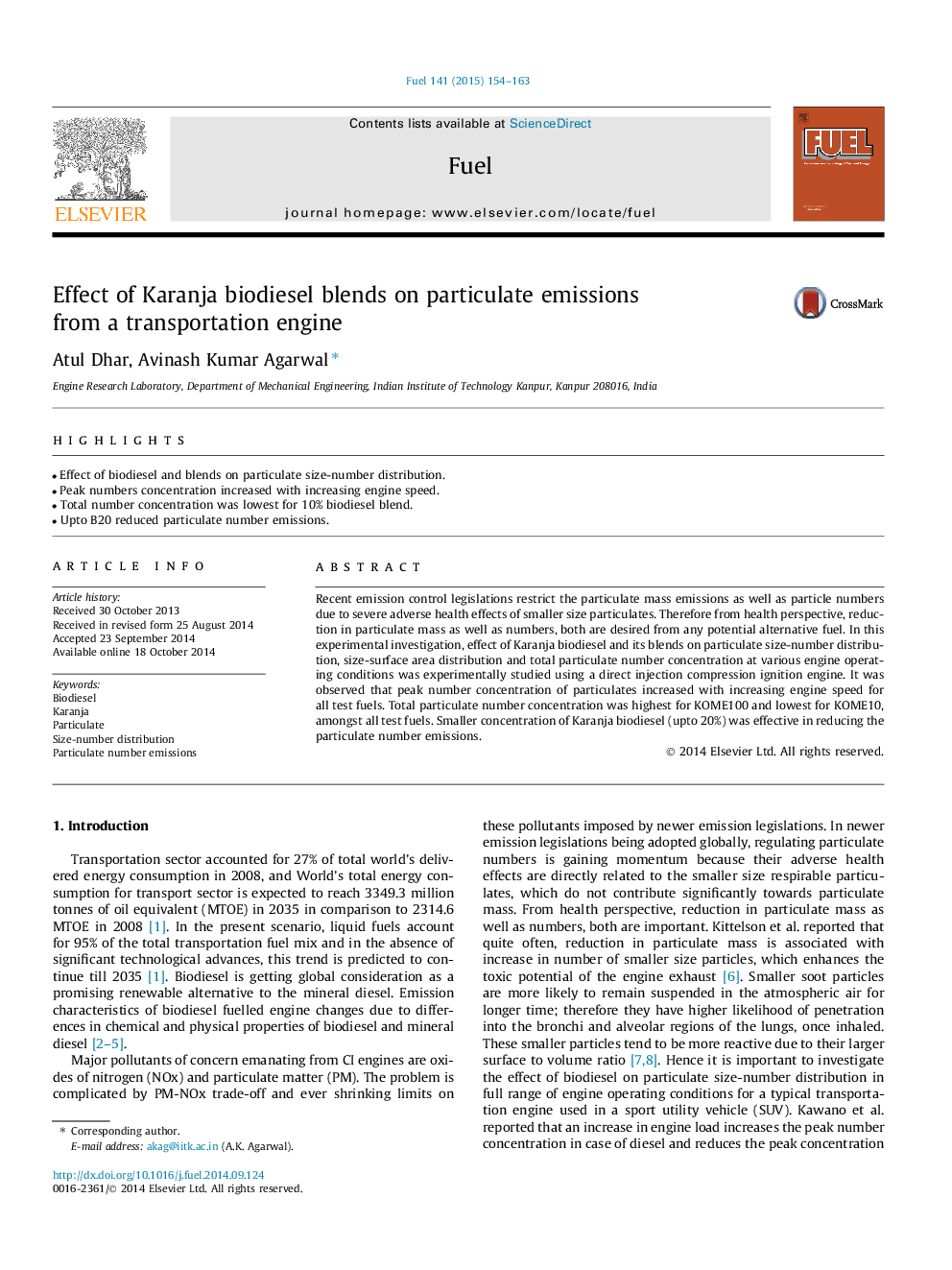| Article ID | Journal | Published Year | Pages | File Type |
|---|---|---|---|---|
| 205886 | Fuel | 2015 | 10 Pages |
•Effect of biodiesel and blends on particulate size-number distribution.•Peak numbers concentration increased with increasing engine speed.•Total number concentration was lowest for 10% biodiesel blend.•Upto B20 reduced particulate number emissions.
Recent emission control legislations restrict the particulate mass emissions as well as particle numbers due to severe adverse health effects of smaller size particulates. Therefore from health perspective, reduction in particulate mass as well as numbers, both are desired from any potential alternative fuel. In this experimental investigation, effect of Karanja biodiesel and its blends on particulate size-number distribution, size-surface area distribution and total particulate number concentration at various engine operating conditions was experimentally studied using a direct injection compression ignition engine. It was observed that peak number concentration of particulates increased with increasing engine speed for all test fuels. Total particulate number concentration was highest for KOME100 and lowest for KOME10, amongst all test fuels. Smaller concentration of Karanja biodiesel (upto 20%) was effective in reducing the particulate number emissions.
